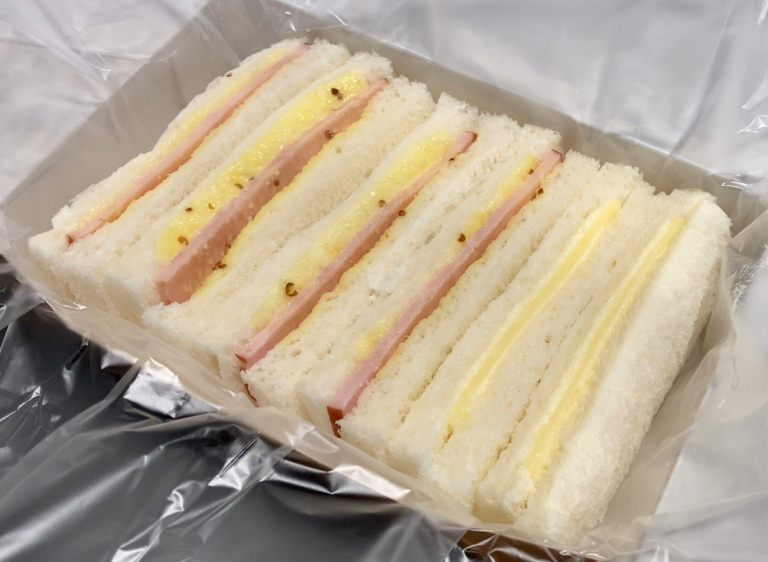
Don’t be fooled by its simplicity, because that’s what makes it shine!
In Kanagawa Prefecture in the city of Kamakura, just about an hour outside of Tokyo by train, there’s a neighborhood called Ofuna that’s famous for its huge Kannon statue. You can see it from the train on both the Tokaido and Yokosuka lines, watching over the town from behind the trees. The huge statue of the goddess of mercy is a symbol of protection for the town and its inhabitants.
But there’s something that Ofuna is famous for that has an even longer history than the Kannon statue: an ekiben (station bento) known as the “Ofuna-ken Sandwich”. Ekiben are popular lunch options for people traveling on the bullet train or on other long train journeys, named for the fact that they are exclusively sold at stations. Since most stations have their own local specialties, part of the fun is trying all the different kinds out there.
Ofuna’s specialty, for example, is their sandwiches, which have bragging rights as the first sandwiches to be used in bento in Japan. They originated in the Meiji period in 1899, and when word got around about these then-unusual but tasty meals, they quickly became a national phenomenon. Ofuna’s sandwiches are, in fact, the reason why sandwiches became a food eaten throughout Japan.
But Ofuna-ken Sandwich bento aren’t limited to Ofuna Station, and you can also find them in the Tokyo metropolitan area. We happened to spot them at Shinagawa Station in central Tokyo, which actually has a much smaller selection of bento shops compared to larger hubs like Tokyo or Shinjuku. Nevertheless, they do sell a variety of really popular bento, including the Ofuna-ken Sandwich Bento, which we snagged for 530 yen (US$4.90).
The packaging has a nice retro feel, while also looking luxurious. It’s full of interesting historical anecdotes about the origins of the sandwiches. For example, we learned that the ham originally used for the sandwiches was actually from a highly rated small-time food producer, and because so much ham was ordered to make sandwiches, that producer eventually evolved into a company that specializes in ham known as the Kamakura Ham Tomioka Company.
Now take a look at these beauties!
They actually looked exactly like the sandwiches depicted in the artwork on the box. They have an old-school, nostalgic feel, a simple look that radiated freshness. They’re simple, but very neatly arrayed.
The box contains four boneless ham sandwich slices and two cheese ones. We tried the ham first, and it’s surprisingly good! Though it seems like a small piece of ham, that doesn’t mean it’s unsatisfying, and the thin layer of mustard really complements its flavor. It’s so delicious that it drew up images of life during the Meiji period in our mind.
The mellow cheese sandwich also has a nostalgic taste, and we were impressed by its high level of quality. Though both sandwiches are extraordinarily simple, you can really enjoy the differences between them as you sample each one. They’re on a whole different level from the convenience store sandwiches that are crammed full of all sorts of different ingredients.
In conclusion, these sandwiches have an undeniable appeal in their simplicity and quality. They leave you with a lingering comfort of simpler days gone by. Like the giant Kannon statue in Ofuna, but different, they leave an impression in your heart. We definitely want to eat them again, and if you have the opportunity to try these sandwiches with more than 120 years of history, we highly recommend you do!
Shop information
Ekiben-ya (Shingawa Branch) / 駅弁屋(品川店)
Tokyo-to Minatao-ku Takanawa 3-26-27
東京都港区高輪3-26-27
Open 6 a.m.-9 p.m.
Website
Images © SoraNews24
● Want to hear about SoraNews24’s latest articles as soon as they’re published? Follow us on Facebook and Twitter!
[ Read in Japanese ]

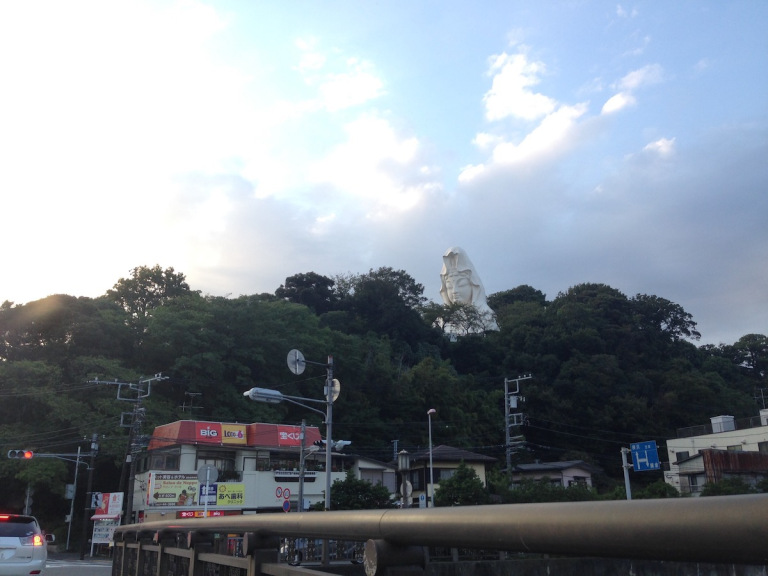
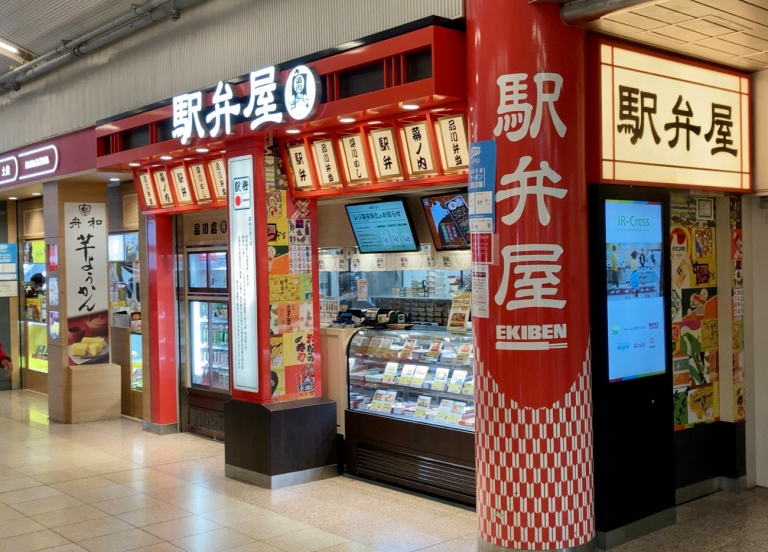
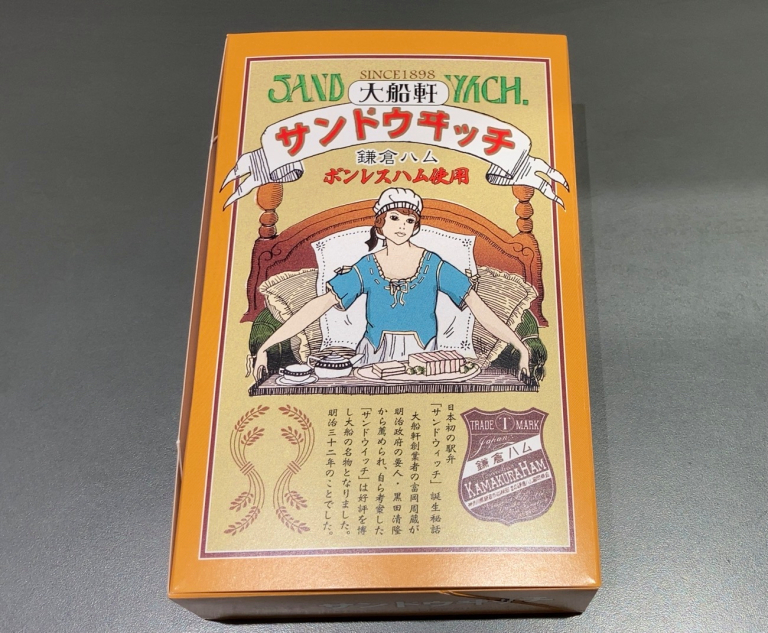
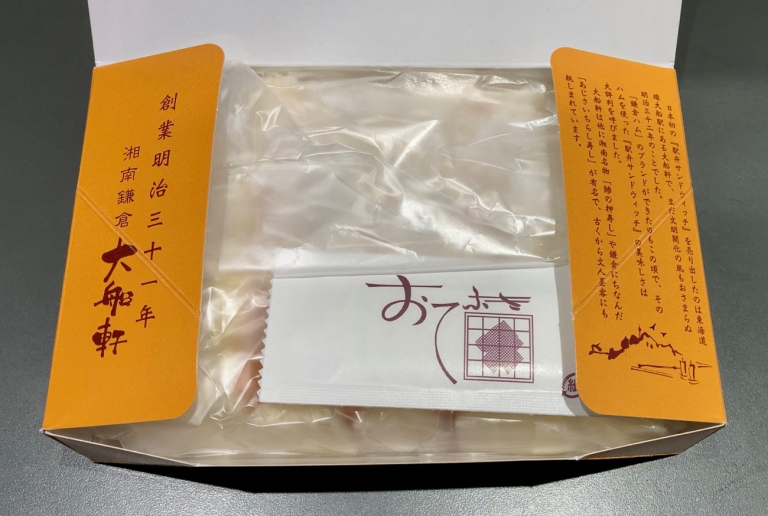
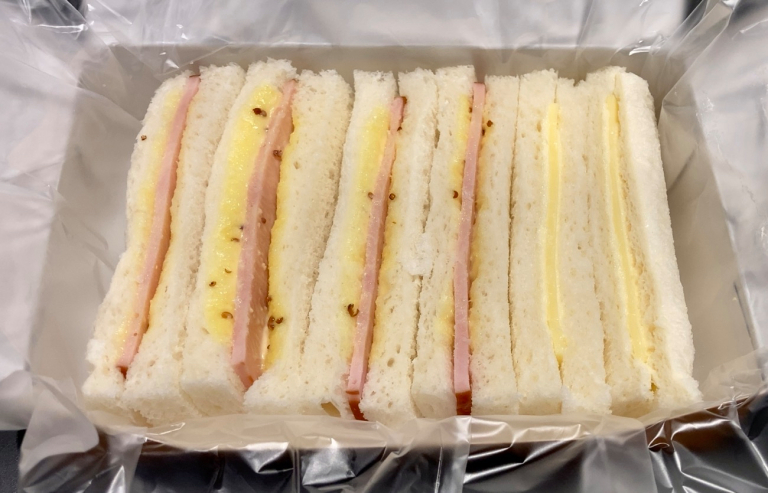
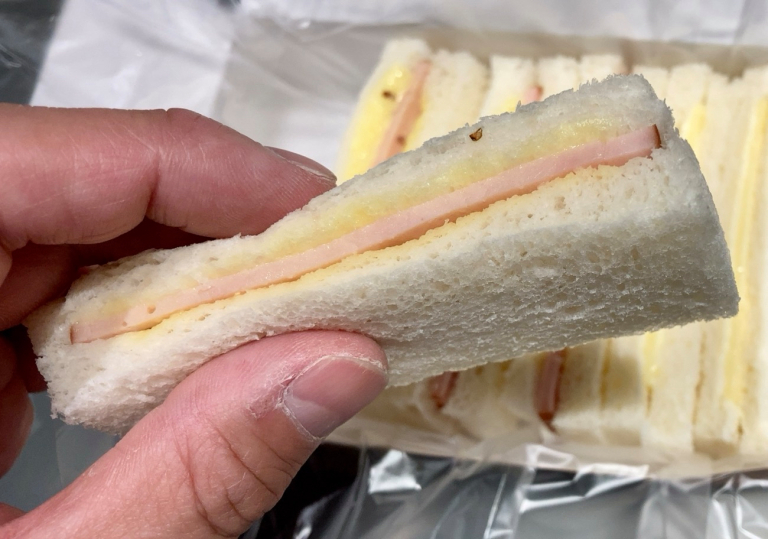
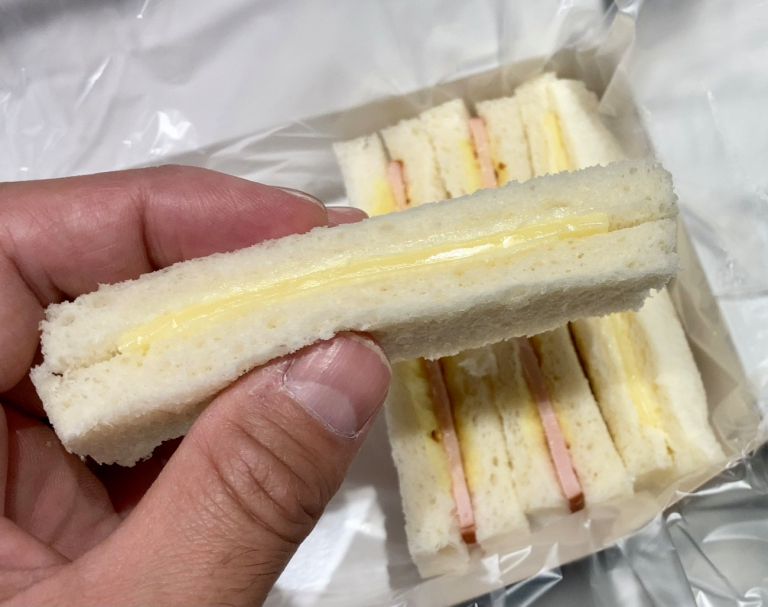
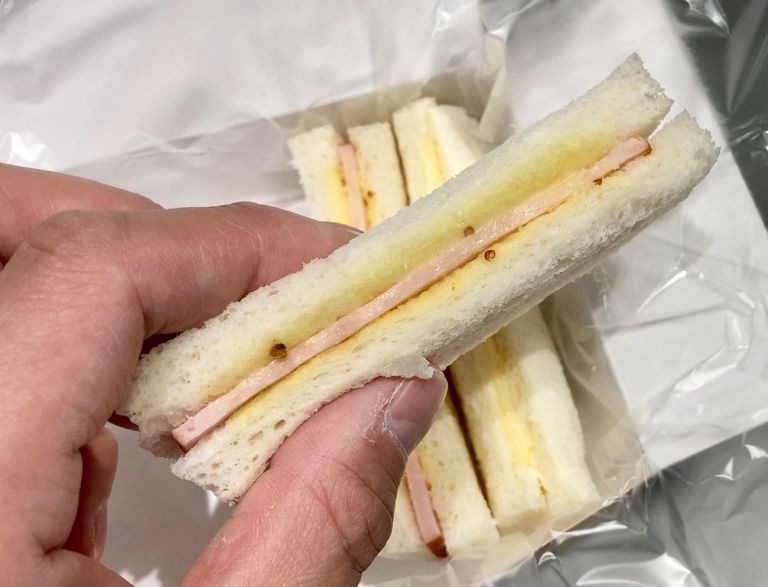
 Shinjuku Bento surprises us with historic ingredient from the samurai era
Shinjuku Bento surprises us with historic ingredient from the samurai era Famous train station bento boxed lunches, but in a can? Taste-testing canned ekiben【Taste test】
Famous train station bento boxed lunches, but in a can? Taste-testing canned ekiben【Taste test】 The 5 best Japanese bento to buy at Kyoto Station
The 5 best Japanese bento to buy at Kyoto Station This ekiben train station bento is filled with surprises
This ekiben train station bento is filled with surprises Tokaido Shinkansen Sushi Journey Bento takes your taste buds on a trip from Tokyo to Osaka
Tokaido Shinkansen Sushi Journey Bento takes your taste buds on a trip from Tokyo to Osaka Cup Noodle tries an authentic Jiro-style ramen, but something’s not quite right
Cup Noodle tries an authentic Jiro-style ramen, but something’s not quite right Japanese beef bowl chain Sukiya’s 2026 Smile Box lucky bag basically pays for itself
Japanese beef bowl chain Sukiya’s 2026 Smile Box lucky bag basically pays for itself The best Starbucks Japan Frappuccinos we want to drink again in 2026
The best Starbucks Japan Frappuccinos we want to drink again in 2026 Hayao Miyazaki says Happy New Year to Studio Ghibli fans with new art for Year of the Horse
Hayao Miyazaki says Happy New Year to Studio Ghibli fans with new art for Year of the Horse What did Shibuya really look like after the crowds on New Year’s Day?
What did Shibuya really look like after the crowds on New Year’s Day? Domino’s Japan releases new cheeseburger pizzas, but do they really taste like burgers?
Domino’s Japan releases new cheeseburger pizzas, but do they really taste like burgers? The secret blowfish auction — trading for deadly but tasty fugu 【Video】
The secret blowfish auction — trading for deadly but tasty fugu 【Video】 Studio Ghibli diorama boxes are much more beautiful than your elementary school art project【Pics】
Studio Ghibli diorama boxes are much more beautiful than your elementary school art project【Pics】 In downtown Tokyo, we talk to a guy who says he’s from Orion’s belt, get called an “idiot”
In downtown Tokyo, we talk to a guy who says he’s from Orion’s belt, get called an “idiot” Pizza Hut Japan’s hot lucky bags are perfect for a New Year’s pizza party
Pizza Hut Japan’s hot lucky bags are perfect for a New Year’s pizza party Starbucks Japan ready to get Year of the Horse started with adorable drinkware and plushies【Pics】
Starbucks Japan ready to get Year of the Horse started with adorable drinkware and plushies【Pics】 7 great places to see Mt. Fuji from without having to climb it
7 great places to see Mt. Fuji from without having to climb it Cyberpunk anime meets traditional culture in Ghost in the Shell gold leaf Japanese changing screens
Cyberpunk anime meets traditional culture in Ghost in the Shell gold leaf Japanese changing screens Hello Kitty Choco Egg figures are an adorable trip through three periods of Japanese pop culture【Pics】
Hello Kitty Choco Egg figures are an adorable trip through three periods of Japanese pop culture【Pics】 We found possibly the quietest Japanese-style hotel in Tokyo’s bustling Shinjuku district
We found possibly the quietest Japanese-style hotel in Tokyo’s bustling Shinjuku district 7-Eleven Japan’s ramen-cooking robot whipped us up a bowl of noodles【Taste test】
7-Eleven Japan’s ramen-cooking robot whipped us up a bowl of noodles【Taste test】 Sumo Sanrio! Hello Kitty and pals team up with Japan Sumo Association for new merch【Pics】
Sumo Sanrio! Hello Kitty and pals team up with Japan Sumo Association for new merch【Pics】 Japan’s oldest largetooth sawfish in captivity back on display in Mie Prefecture
Japan’s oldest largetooth sawfish in captivity back on display in Mie Prefecture More Than a Capsule Stay: Why Solo Travelers Choose “global cabin Yokohama Chinatown”
More Than a Capsule Stay: Why Solo Travelers Choose “global cabin Yokohama Chinatown” 7-Eleven Japan starts new temporary luggage storage service in over 300 branches
7-Eleven Japan starts new temporary luggage storage service in over 300 branches Disillusionment at Tsukiji’s tourist-target prices led us to a great ramen restaurant in Tokyo
Disillusionment at Tsukiji’s tourist-target prices led us to a great ramen restaurant in Tokyo Starbucks teams up with 166-year-old Kyoto doll maker for Year of the Horse decorations【Photos】
Starbucks teams up with 166-year-old Kyoto doll maker for Year of the Horse decorations【Photos】 Tokyo considering law requiring more trash cans following litter increase in heavily touristed area
Tokyo considering law requiring more trash cans following litter increase in heavily touristed area Tokyo’s Tsukiji sushi neighborhood asks tour groups to stay away for the rest of the month
Tokyo’s Tsukiji sushi neighborhood asks tour groups to stay away for the rest of the month Tokyo event lets you travel back in time, for free, to celebrate 100 years since Showa era start
Tokyo event lets you travel back in time, for free, to celebrate 100 years since Showa era start Sanrio theme park in Japan announces plans to expand into a Sanrio resort
Sanrio theme park in Japan announces plans to expand into a Sanrio resort Japan may add Japanese language proficiency, lifestyle classes to permanent foreign resident requirements
Japan may add Japanese language proficiency, lifestyle classes to permanent foreign resident requirements Stamina-destroying “Paralysis Noodles” are Tokyo’s newest over-the-top ramen innovation
Stamina-destroying “Paralysis Noodles” are Tokyo’s newest over-the-top ramen innovation Survey asks foreign tourists what bothered them in Japan, more than half gave same answer
Survey asks foreign tourists what bothered them in Japan, more than half gave same answer Japan’s human washing machines will go on sale to general public, demos to be held in Tokyo
Japan’s human washing machines will go on sale to general public, demos to be held in Tokyo Japan’s deadliest food claims more victims, but why do people keep eating it for New Year’s?
Japan’s deadliest food claims more victims, but why do people keep eating it for New Year’s? We deeply regret going into this tunnel on our walk in the mountains of Japan
We deeply regret going into this tunnel on our walk in the mountains of Japan Studio Ghibli releases Kodama forest spirits from Princess Mononoke to light up your home
Studio Ghibli releases Kodama forest spirits from Princess Mononoke to light up your home Major Japanese hotel chain says reservations via overseas booking sites may not be valid
Major Japanese hotel chain says reservations via overseas booking sites may not be valid Put sesame oil in your coffee? Japanese maker says it’s the best way to start your day【Taste test】
Put sesame oil in your coffee? Japanese maker says it’s the best way to start your day【Taste test】 No more using real katana for tourism activities, Japan’s National Police Agency says
No more using real katana for tourism activities, Japan’s National Police Agency says Starbucks Japan reveals new sakura drinkware collection, inspired by evening cherry blossoms
Starbucks Japan reveals new sakura drinkware collection, inspired by evening cherry blossoms Updated cherry blossom forecast shows extra-long sakura season for Japan this year
Updated cherry blossom forecast shows extra-long sakura season for Japan this year Cute ekiben station bento looks like it’s from Japan but it’s from a different place entirely
Cute ekiben station bento looks like it’s from Japan but it’s from a different place entirely Epic cutlet sandwiches in Osaka are the best Shinkansen bento
Epic cutlet sandwiches in Osaka are the best Shinkansen bento Japanese train becomes a restaurant at this sleepy countryside station
Japanese train becomes a restaurant at this sleepy countryside station Tokyo Station staff share their top 10 favorite ekiben
Tokyo Station staff share their top 10 favorite ekiben Tokyo Station’s second-most popular bento is great because of what it isn’t【Taste test】
Tokyo Station’s second-most popular bento is great because of what it isn’t【Taste test】
Leave a Reply